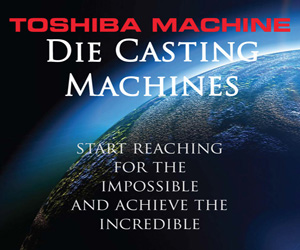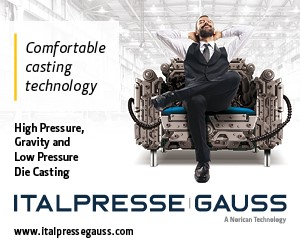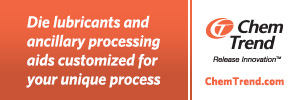The four families of die casting alloys offer wide latitude for trade-offs in design and economic factors.
The following comparison in nine categories will assist in the selection of the optimum die casting alloy:
- Alloy cost
- Process cost
- Structural properties
- Minimum weight
- Impact strength
- Surface finish
- Corrosion resistance
- Bearing properties and wear resistance
- Machinability
Alloy Cost
Alloy cost is an important factor in overall product cost, particularly among die casting alloys. Alloy prices tend to fluctuate with market conditions, so that any comments must be general in nature. Prices are quoted on the basis of weight, but design is based on volume of material. The volume of metal in a die casting, whether optimized for aluminum, magnesium, zinc or ZA, will usually be nearly constant. Therefore, cost per cubic inch is a good first approximation of relative material cost.
Aluminum alloys usually have the lowest cost per cubic inch, which accounts for the widespread use of aluminum. Magnesium, zinc and ZA alloys regain some of the material cost differential in applications where wall thicknesses are controlled by casting rather than functional constraints; die casters are currently casting thinner walls in these alloys than in aluminum.
Process Cost
Process costs are another important component in overall product cost and closely related to alloy selection. Four factors are important:
- Alloys that can be hot-chamber cast usually require smaller die casting machines that run at faster rates than equivalent size castings that run on cold-chamber machines.
- The initial die manufacturing cost is essentially the same, regardless of the cast alloy. However, die maintenance and replacement costs vary. They are lowest for zinc alloys because they do not attack die steels and they are cast at relatively low temperatures. These costs increase with magnesium and ZA alloys, and increase further with aluminum alloys.
- Magnesium, zinc and ZA alloys may reduce or eliminate finish machining operations when precision features are required, such as zero draft and press fit tolerances, which can often be as cast in these alloys.
- Zinc alloys and ZA-8 tend to be the material of choice for very small die castings (typically less than one ounce, or 28 gm). This advantage is attributed to die casters who have developed special purpose, highly automated machines that produce small, “miniature” die castings at very low process costs.
Structural Properties
Comparative mechanical and physical properties of die casting alloys are presented in the table “Die Casting Alloys Material Properties Comparison.” Aluminum alloys exhibit the mid-range modulus of elasticity of the four alloy groups. Their relatively high strength and low density make them the frequent choice for medium-to-large die castings with structural requirements. Magnesium, with lower strength and rigidity, has been competitive with aluminum in some applications by developing systems of thin, strategically located reinforcing ribs. In applications where maximum strength is required within a specified space, ZA alloys, which offer the highest ultimate and yield strengths as well as modulus of elasticity, are the best choice.
Aluminum alloys maintain their structural properties over a wider temperature range than the other alloy groups. Their stability often makes them the material of choice at elevated temperatures, particularly where minimum or no creep is permissible.
The creep characteristics of zinc and ZA alloys, which are similar to visco-elastic behavior of thermoplastics, must be taken into account when long-term sustained loads induce moderate to high stress levels. Data are available that enable the designer to predict alloy behavior and modify the design when necessary.
Minimum Weight
Magnesium alloys are the dominant choice when weight must be minimized. Where weight is a major factor and other criteria such as mechanical properties or cost are important, aluminum alloys are often competitive.
Impact Strength & Dent Resistance
The zinc alloys offer the highest impact strength of the four groups. However, the impact strength of the zinc alloys begins to diminish sharply as temperature is reduced below 32°F (0°C). The impact resistance of aluminum and magnesium alloys vary within each alloy group.
Dent resistance, as noted above, is indicated by the ratio of yield strength to modulus of elasticity. For identical features with equal wall thicknesses, ZA-27 offers the highest dent resistance, followed by ZA-12 and ZA-8. The zinc alloys have a lower yield strength, but their nonlinear modulus of elasticity allows them to store more elastic energy than the yield strength to modulus of elasticity ratio indicates, and increases their dent resistance. They may be considered slightly below ZA-8, and somewhat superior to aluminum and magnesium. The yield strength to modulus of elasticity ratios are nearly equal for aluminum and magnesium alloys.
Surface Finish
The compatibility of magnesium, zinc and ZA-8 alloys with the die steel means that a high quality finish can be maintained over long production runs with these alloys. (Die surface quality is essential to casting surface quality.) There are economical processes in place for depositing a bright, durable chrome finish on zinc, ZA-8 and ZA-12 die castings when this type of finish is required.
Corrosion Resistance
The major differences in corrosion resistance occur within the alloy groups, particularly aluminum and magnesium. Aluminum alloys vary according to chemical composition, particularly copper content. Magnesium alloys vary with metal purity. The more resistant alloys offer moderate corrosion resistance. The corrosion resistance of all die casting alloys can be improved, as required, with a variety of low-cost surface treatment systems.
Bearing Properties & Wear Resistance
All die castings alloys can be used for hydrodynamic bearing applications, where oil is fed to the bearing under pressure, and a full oil film is maintained by rotation of the journal in the bearing. Where only partial lubrication is available, the ZA alloys and 390 aluminum offer very good resistance to abrasion and wear.
Machinability
Die casting alloys offer good to excellent machining characteristics when machining operations are required. Aluminum alloys exhibit moderate variation. Magnesium offers the best machinability of any structural metal in terms of tool life, minimum energy consumption, and low cutting forces. In some cases, deep finish cuts are made on magnesium alloys that would require two cuts (rough and finish) on any other alloy.








